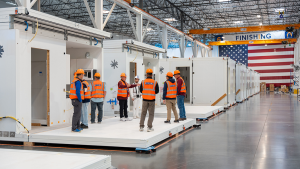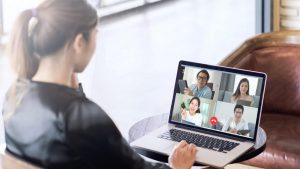The Toronto chapter of the Urban Land Institute (ULI) recently celebrated the latest honour achieved by the city’s Alexandra Park revitalization project, hosting a webinar billed as exploring the “origin story” of the project after it was awarded a ULI Global Award for Excellence.
The revitalization was hailed as a community-led vision. It was launched in 2009 when local residents of the diverse community reached out to then councillor Adam Vaughan in an effort to maintain community control of redevelopment.
The 18-acre site bound by Kensington Market, Chinatown and the Queen Street West neighbourhood is heavily populated by first-generation Canadians and had a significant Toronto Community Housing (TCHC) presence, with 2,500 residents living in mixed-income, rent-geared-to-income (RGI) housing.
With the City of Toronto, the TCHC, the residents, development partner Tridel and the Atkinson Housing Cooperative as project drivers, the revitalization plan was based on the TCHC’s theme of Building a Great Neighbourhood.
Panellist Michel Trocme, a partner with Urban Strategies, explained that theme meant protecting the sense of community, improving access, developing better community facilities and creating a safer and greener environment.
“The first principle and the one that makes Alexandra Park so distinctive is the principle of zero displacement,” said Trocme. “None of the existing residents need to leave the community in order to facilitate this revitalization.
“As you can well expect, that is something that is a bit of a challenge, because it means that you have to do a very careful dance, if you will, in terms of the phasing. It’s much slower, but in the end revitalizations are all about the community and not so much about the actual bricks and mortar of a project like this.”
The multi-phased redevelopment got underway in 2014 with the first demolition, and the final phase is expected to last throughout this decade. Projects include the replacement of 410 RGI units, refurbishing 396 RGI units, construction of low-rise and townhouse units based on a combination of market and RGI tenures, and creating a new public park and basketball courts, a larger community centre, new connector streets, improved pedestrian access and retail including incubator spaces for local social enterprises.
Moderator Laurie Payne, formerly with Urban Strategies and now EVP development with Osmington Gerofsky Development, said the project, with its intense community involvement, came to redefine city building.
“For me, and for anybody else who has been close to this project, it fundamentally changed the way I practise city building and my understanding of the role of the community in decision-making and making great places,” said Payne.
Panellists included five members of the community who were involved in the project in different ways: Colleen Lavallee, Marwa Eldadiry, Dianne Williams, Dorran Grant and Delores Pian.
Lavallee explained her neighbours had to be convinced the revitalization would not go the way of the Regent Park redevelopment, which saw some residents dispersed outside of the community.“A lot of people were afraid of change,” said Lavallee, who advocated for improvements to the community centre. “We really needed to reassure people that we were going to keep this community together — the strength, the advocacy, the connection.
“The concept of zero displacement was really important.”
Eldadiry said 10 years after the process started, not one person has been displaced other than those who asked for it.
She said the team harnessed the “mentality, energy, engagement, persistence and strong will” of community members, “ensuring that the physical aspects of the revitalization met their needs, like basements and backyards, but more importantly, beyond buildings the revitalization was about the people who live there and all the aspects of their lives.”
Grant was an active member of the board of directors for the co-op, an employee at the community centre and an advocate for youth rights within the community. He worked on developing employment opportunities. TCHC has said that 157 jobs have been created by the project — and Grant is now employed by Tridel.
“Not only myself, going to work I see individuals in so many different professions, from project management, to customer care in construction,” he recounted. “I’ve seen them being brought into unions.
“The great part about it is, that didn’t just end there. There’s been mentorship, there has been guidance.”
William Mendes, a TCHC community revitalization consultant, echoed Payne, who said the community development component of the job is actually more difficult than construction. He described hundreds of public meetings, backyard gatherings, recipe-sharing sessions and tea parties in which the developers went to the people, not the other way around.
“Through those relationships we were better able to translate the conversation and decision-making process around revitalization,” said Mendes.
Follow the author on Twitter @DonWall_DCN.









Recent Comments
comments for this post are closed